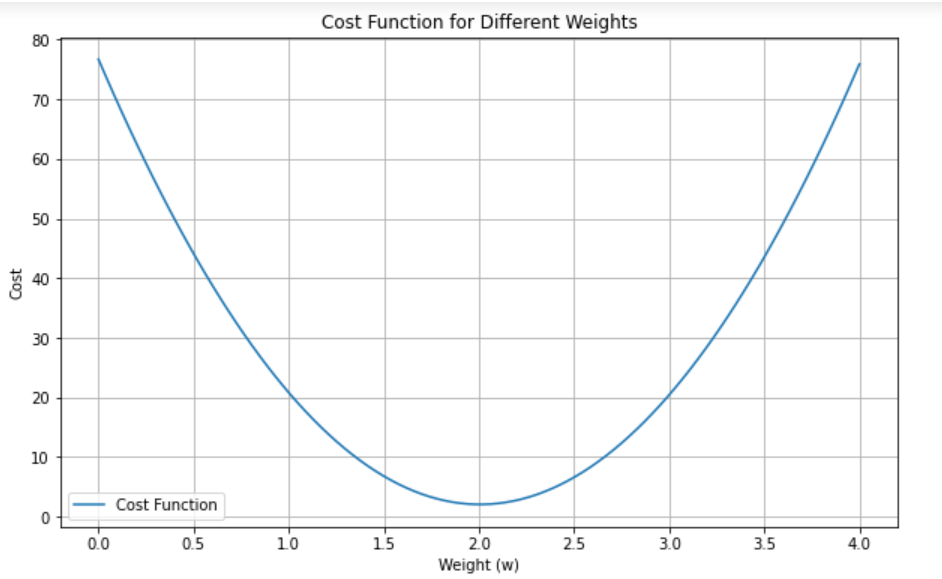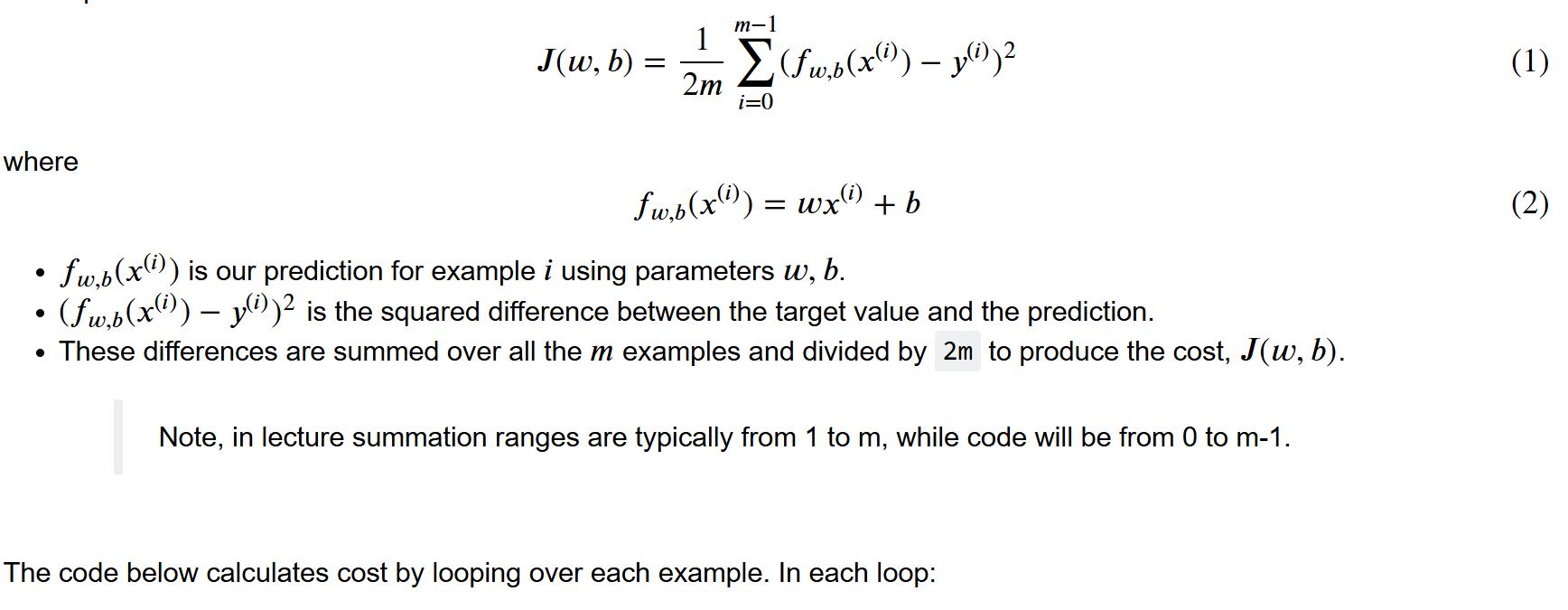For my personal learning and understanding, I will slowly go through the linear regression cost function very slowly. So that I understand exactly how it works. My hopes it that this little exercise will cement my understanding, or, improve my intuition of this function a little bit more.
The equation for cost with one variable is:
$$J(w,b) = \frac{1}{2m} \sum\limits_{i = 0}^{m-1} (f_{w,b}(x^{(i)}) – y^{(i)})^2 $$
First we need to setup some background variables.
I will create an argument, named find_cost, in python with parameters x, y, w, b. Also I create a variable m inside the find cost argument to find the overall amount of training data in x.
def find_cost(x, w, y, b):
# This finds the overall number of training examples.
m = x.shape[0]
# This variable will append the sum of the squared errors from the later code.
# We start it at 0.
cost_sum = 0We can now being plugin in our above cost function equation. We start by solving for our predicted values
which would be:
$$f_{w,b}(x^{(i)}) $$
since
$$f_{w,b}(x^{(i)}) = wx^{(i)} + b$$
it would be this:
f_wb = w * x + b
$$((wx^{(i)} +b ) – y^{(i)})^2 $$
cost = (f_wb - y[i]) ** 2$$\sum\limits_{i = 0}^{m-1} ((wx^{(i)} +b ) – y^{(i)})^2 $$
Then we add all the squared errors up and append (+=) them into variable cost_sum
cost_sum += cost$$\frac{1}{2m} \sum\limits_{i = 0}^{m-1} ((wx^{(i)} +b ) – y^{(i)})^2 $$
total = (1 / (2 * m)) * cost_sumSo altogether we have:
def find_cost(x, w, y, b):
m = x.shape[0]
for i in range(m):
f_wb = w * x[i] + b
cost = (f_wb - y[i]) ** 2
cost_sum += cost
total = (1 / (2 * m)) * cost_sum
return total_cost
This above python code is equal to $$J(w,b) = \frac{1}{2m} \sum\limits_{i = 0}^{m-1} (f_{w,b}(x^{(i)}) – y^{(i)})^2 $$
This really helped! I’ll keep doing this in the future!



Leave a Reply